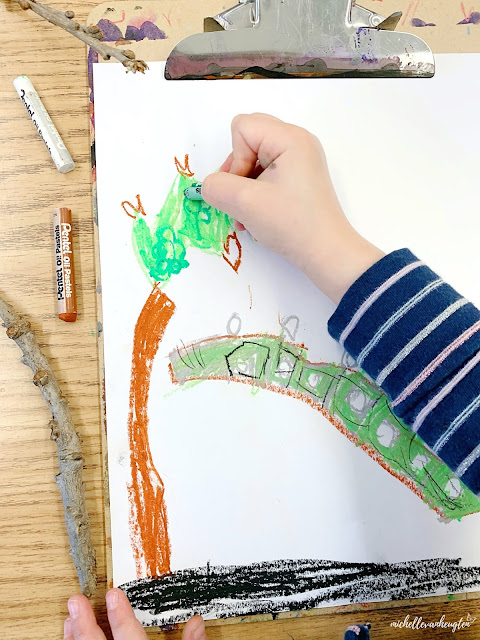"𝐿𝑒𝒶𝓇𝓃𝒾𝓃𝑔 𝓂𝒶𝓉𝒽𝑒𝓂𝒶𝓉𝒾𝒸𝓈 𝒾𝓈 𝒶𝒷𝑜𝓊𝓉 𝓁𝑜𝑜𝓀𝒾𝓃𝑔 𝒶𝓉 𝓌𝒽𝒶𝓉 𝓎𝑜𝓊 𝓉𝒽𝑜𝓊𝑔𝒽𝓉 𝓎𝑜𝓊 𝓊𝓃𝒹𝑒𝓇𝓈𝓉𝑜𝑜𝒹
𝒶𝓃𝒹 𝓈𝑒𝑒𝒾𝓃𝑔 𝓉𝒽𝒶𝓉 𝓉𝒽𝑒𝓇𝑒 𝒾𝓈 𝒹𝑒𝑒𝓅𝑒𝓇 𝓂𝓎𝓈𝓉𝑒𝓇𝓎 𝓉𝒽𝑒𝓇𝑒 𝓉𝒽𝒶𝓃 𝓎𝑜𝓊 𝓇𝑒𝒶𝓁𝒾𝓏𝑒𝒹." ~ 𝒟𝒶𝓃 𝐹𝒾𝓃𝓀𝑒𝓁
𝒶𝓃𝒹 𝓈𝑒𝑒𝒾𝓃𝑔 𝓉𝒽𝒶𝓉 𝓉𝒽𝑒𝓇𝑒 𝒾𝓈 𝒹𝑒𝑒𝓅𝑒𝓇 𝓂𝓎𝓈𝓉𝑒𝓇𝓎 𝓉𝒽𝑒𝓇𝑒 𝓉𝒽𝒶𝓃 𝓎𝑜𝓊 𝓇𝑒𝒶𝓁𝒾𝓏𝑒𝒹." ~ 𝒟𝒶𝓃 𝐹𝒾𝓃𝓀𝑒𝓁
Children’s mathematical thinking evolves naturally out of their daily play and through their curious nature. When a child engages with materials in a playful way, their natural ability to experiment, test ideas and expand their own thinking through investigations builds their mathematical thinking. Children from a very young age begin their mathematical journey in the way that they investigate the world around them. Early mathematical learning is experiential and taken in through the senses.
A young child who is filling and dumping containers is exploring capacity and size. When children organize their collections by colour many foundational concepts are present such as, sorting and classifying. These are just two examples of how children through play make their mathematical thinking visible. In what ways then can we build upon these initial investigations?
When children are engaged in play it is important to remember that we do not want to take over the natural direction of the play. We must not interrupt the focus of the play with our own agendas. That being said, play provides a rich opportunity, to extend learning and communicate with the child about their mathematical thinking. When observing children’s math play, sharing your observations and posing questions that elicit reflection can provide an opportunity for children to share their thinking. When we photograph and record our dialogue with children it serves as a starting point for our next considerations. Technology provides a wonderful way to capture a diary of children’s play that can be shared back with them. In this way, children become reflective of their own play and ideas which in turn sparks new thinking when we share photos with them. Honoring where the child is at and building upon their understandings we gently guide their math journey in play.
Sensory bin play provides many opportunities for mathematical understandings to be discovered through interactions with materials and others. Children naturally create their own authentic math play as they engage in play. As they share in dramatic play children co-create stories that are rich in mathematical thinking.
To read more about children's math play click here!
If you would like each blog post delivered right into your inbox become a blog subscriber visit the sidebar. We would be honoured if you joined our creative community.
❤️
𝑀𝒾𝒸𝒽𝑒𝓁𝓁𝑒








































